Interested in living in one of the first racially-integrated churches in Chicago? A developer is working on converting this striking Gothic church into 29 rental apartments and a small co-working space…a slightly unusual one, but a preservation and housing win nonetheless.
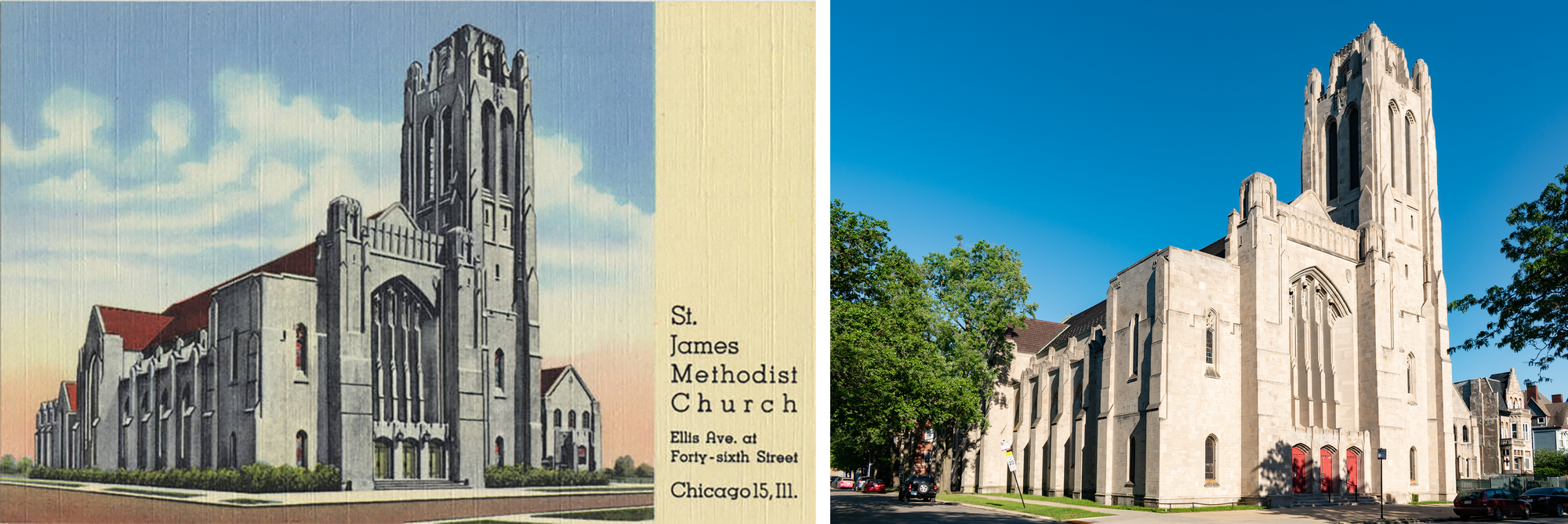
The integration of St. James: this part of Kenwood flipped from 78% white in 1948 to 85% Black in only five years—man, blockbusting and white panic were POWERFUL. Rather than pick up and leave like many Protestant congregations, a shrinking St. James UMC decided to respond to white flight in a relatively novel way (...by Chicago standards): they opened up their doors to the new neighbors.
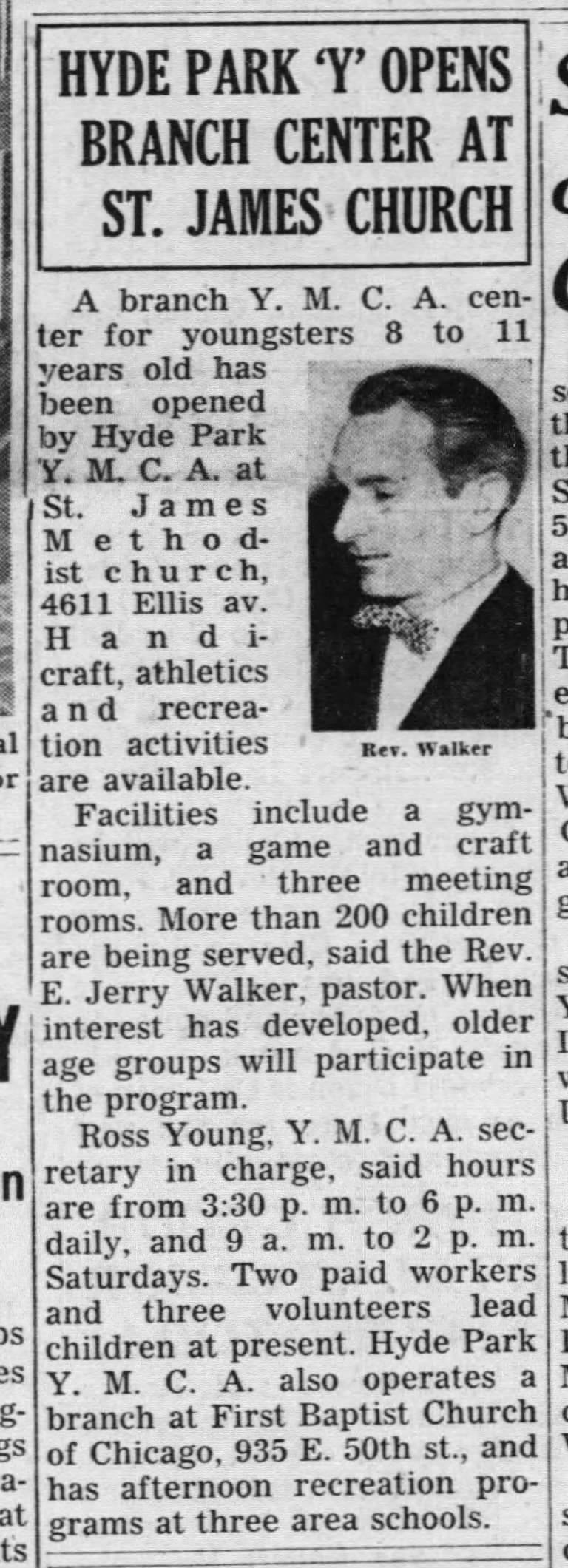
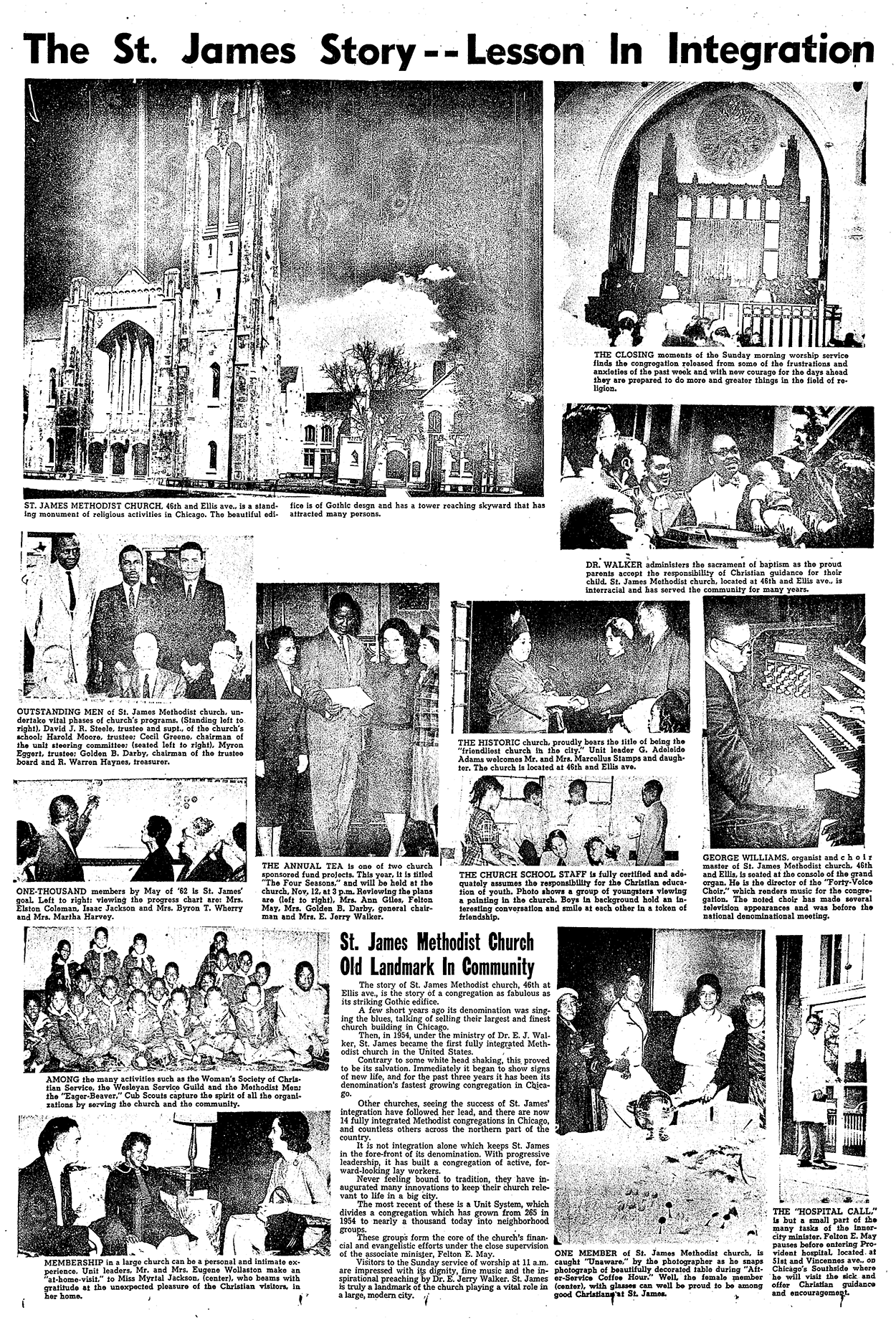

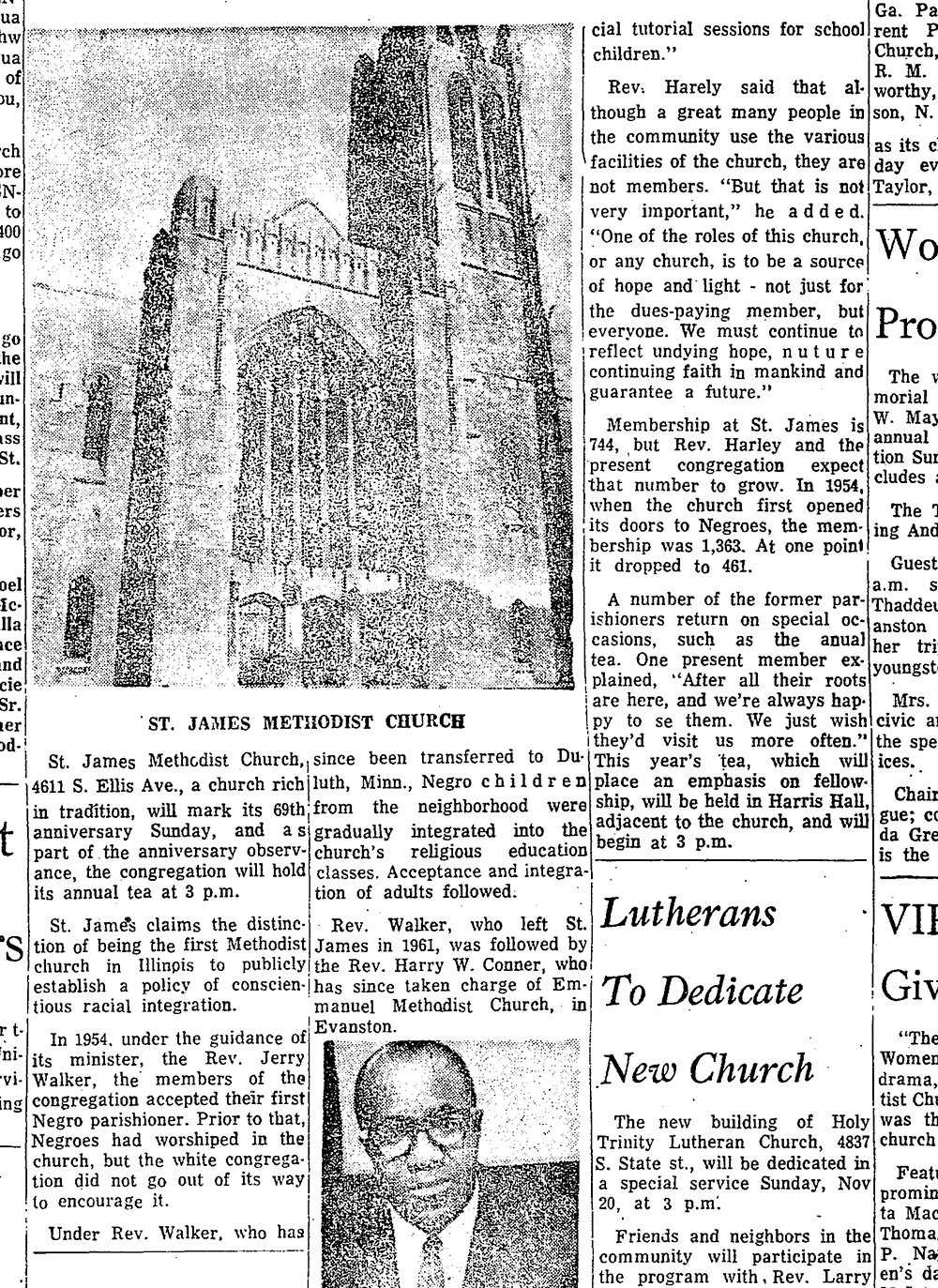
1954 article on the opening of a YMCA branch in the church | 1961 Chicago Defender article, 'A Lesson in Integration' | 1956 article on how the choice to integrate had reversed the church's membership slump | 1966 Chicago Defender article on the church's celebration of its 69th anniversary
Not all at once—they started by opening a YMCA branch in the church to serve neighborhood kids—but integrating the church was an intentional response to the congregation’s declining numbers, to the extent that in the 1960s the Chicago Defender published an article headlined, “The St. James Story – Lesson in Integration”.

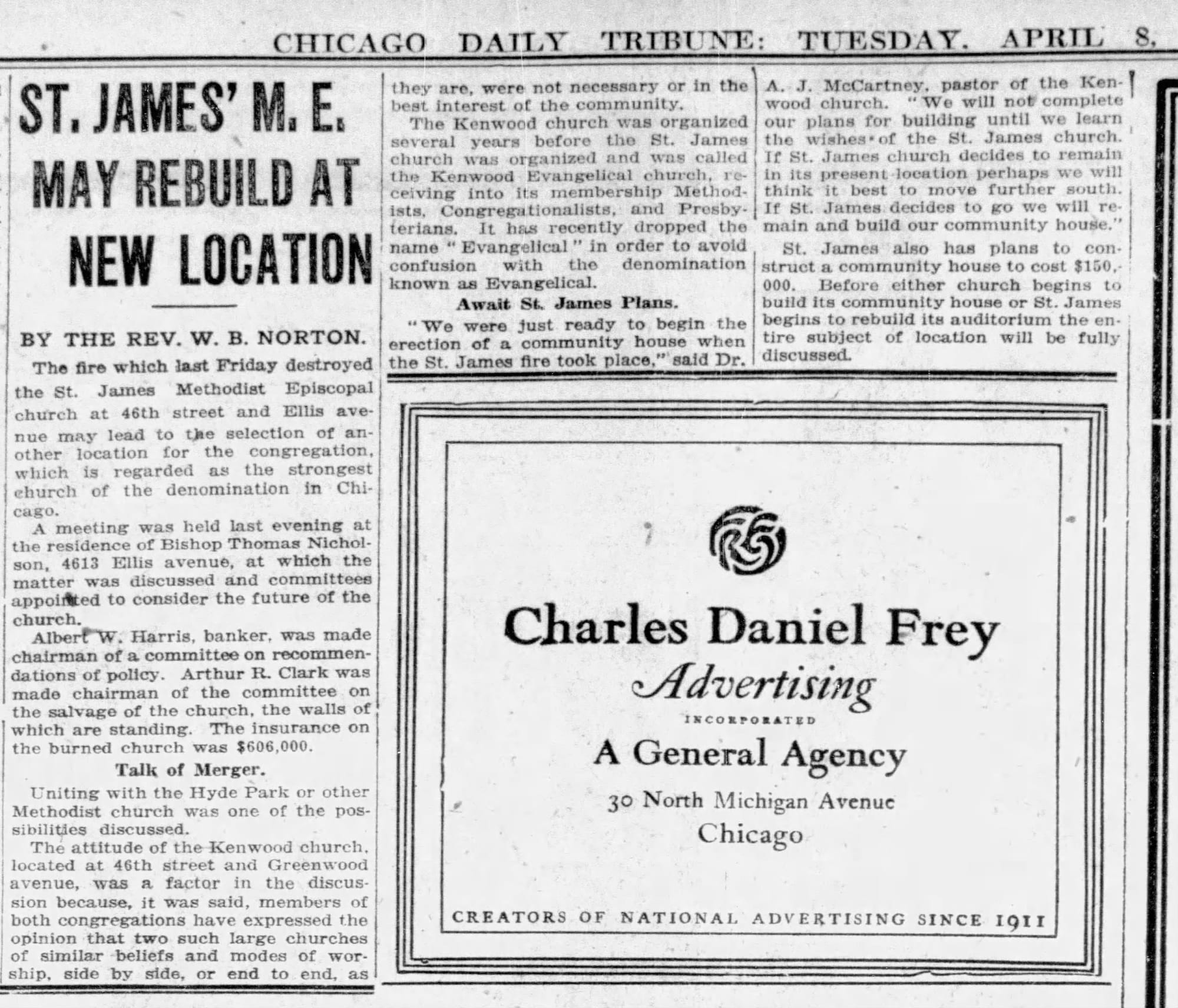
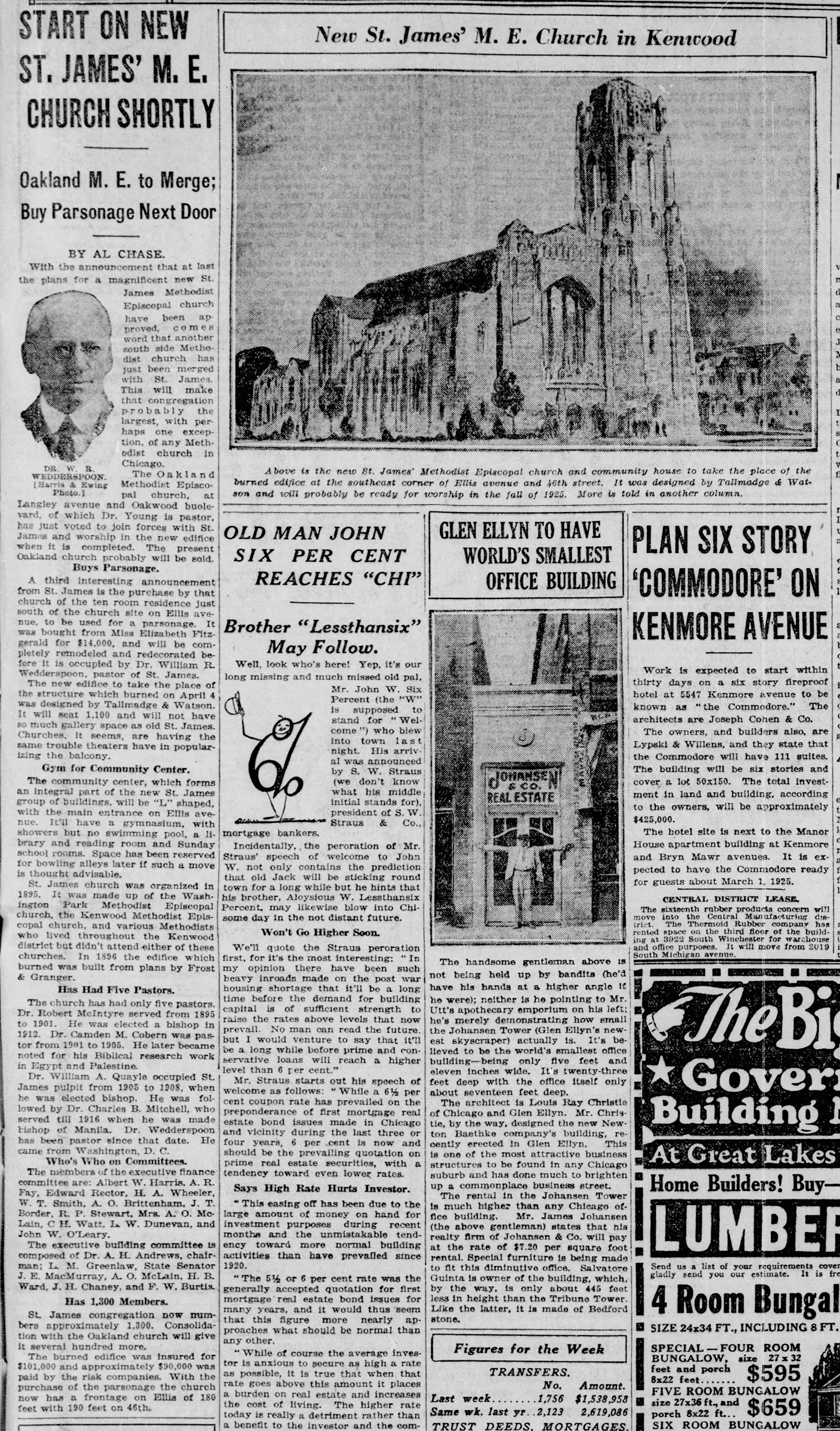
1924 articles on the fire that burned the previous church building, plans for rebuilding, and the start of construction
Built in 1925 after their previous church on this site burned down, at the time this was one of the wealthiest congregations in the city, in one of its most fashionable neighborhoods. For example: one of the church trustees involved in the rebuilding efforts was Albert W. Harris, whose family gave its name to one of the city’s biggest banks (Harris Bank, acquired by Bank of Montreal in 1984, now known as BMO).
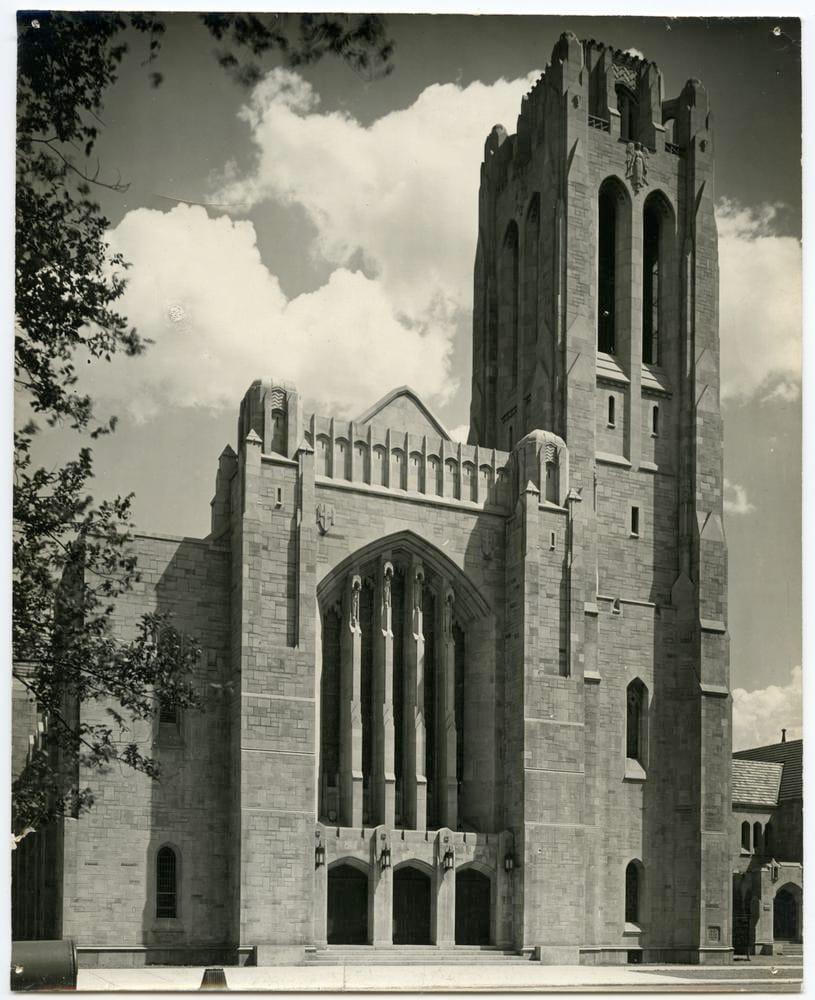
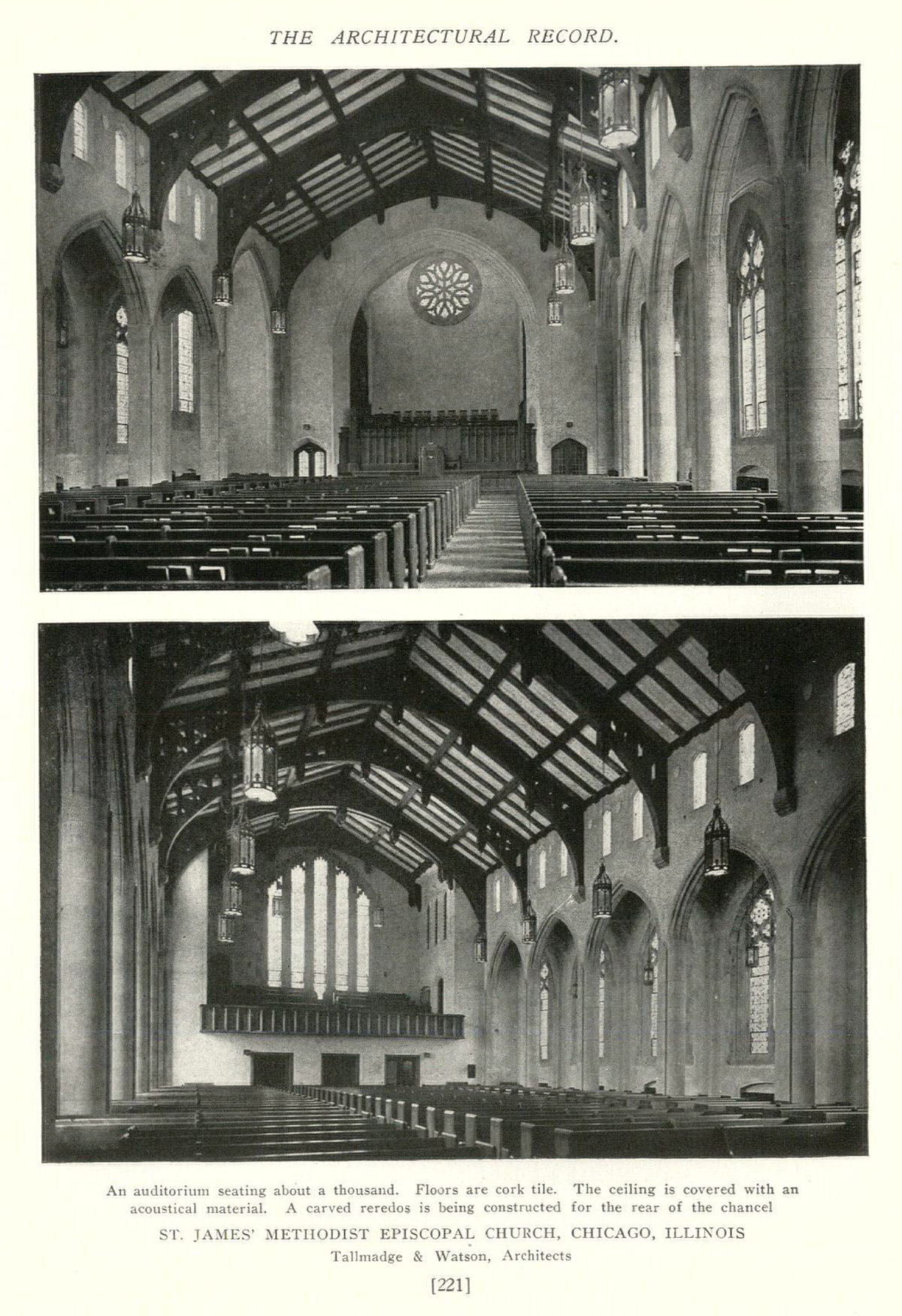
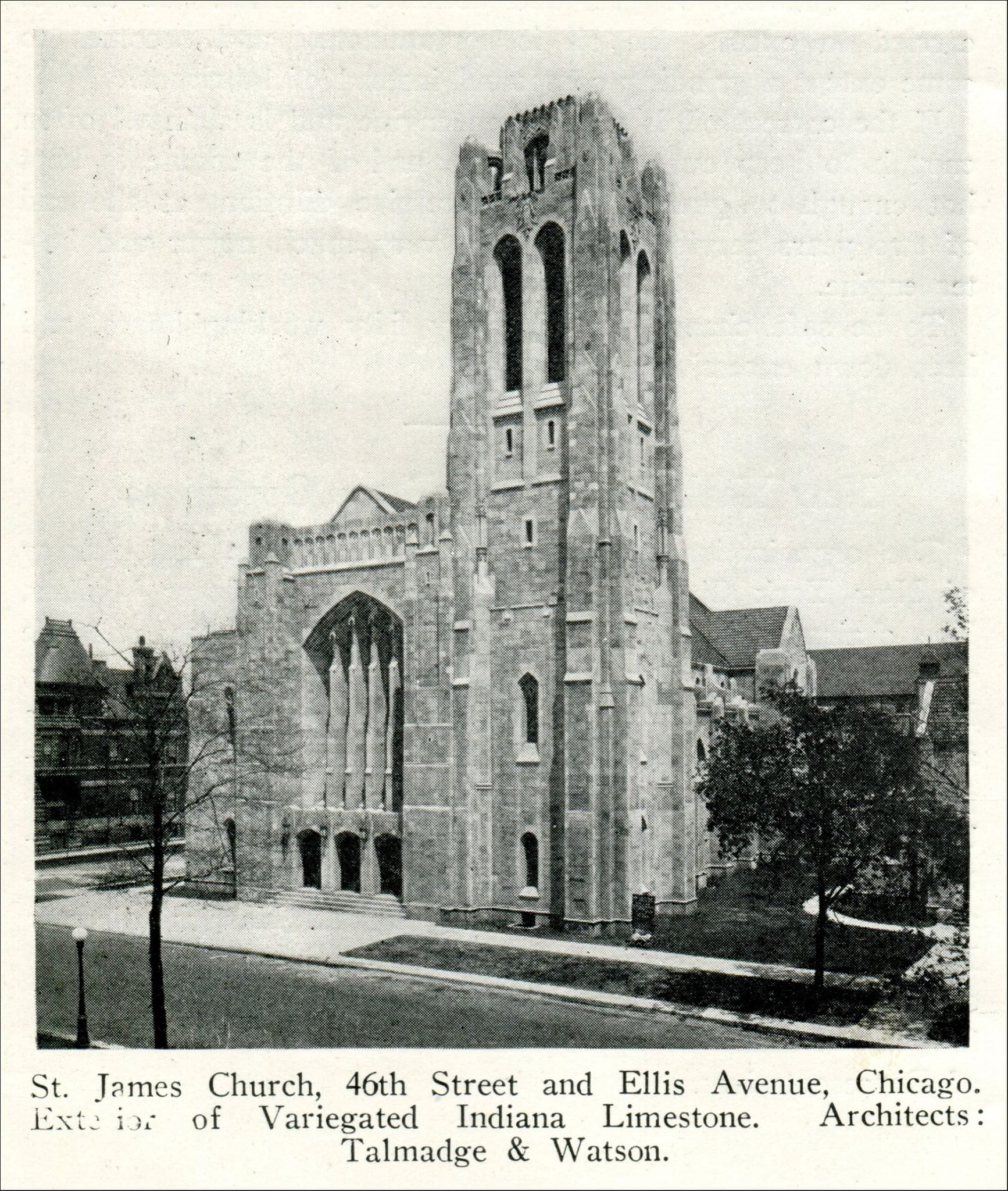
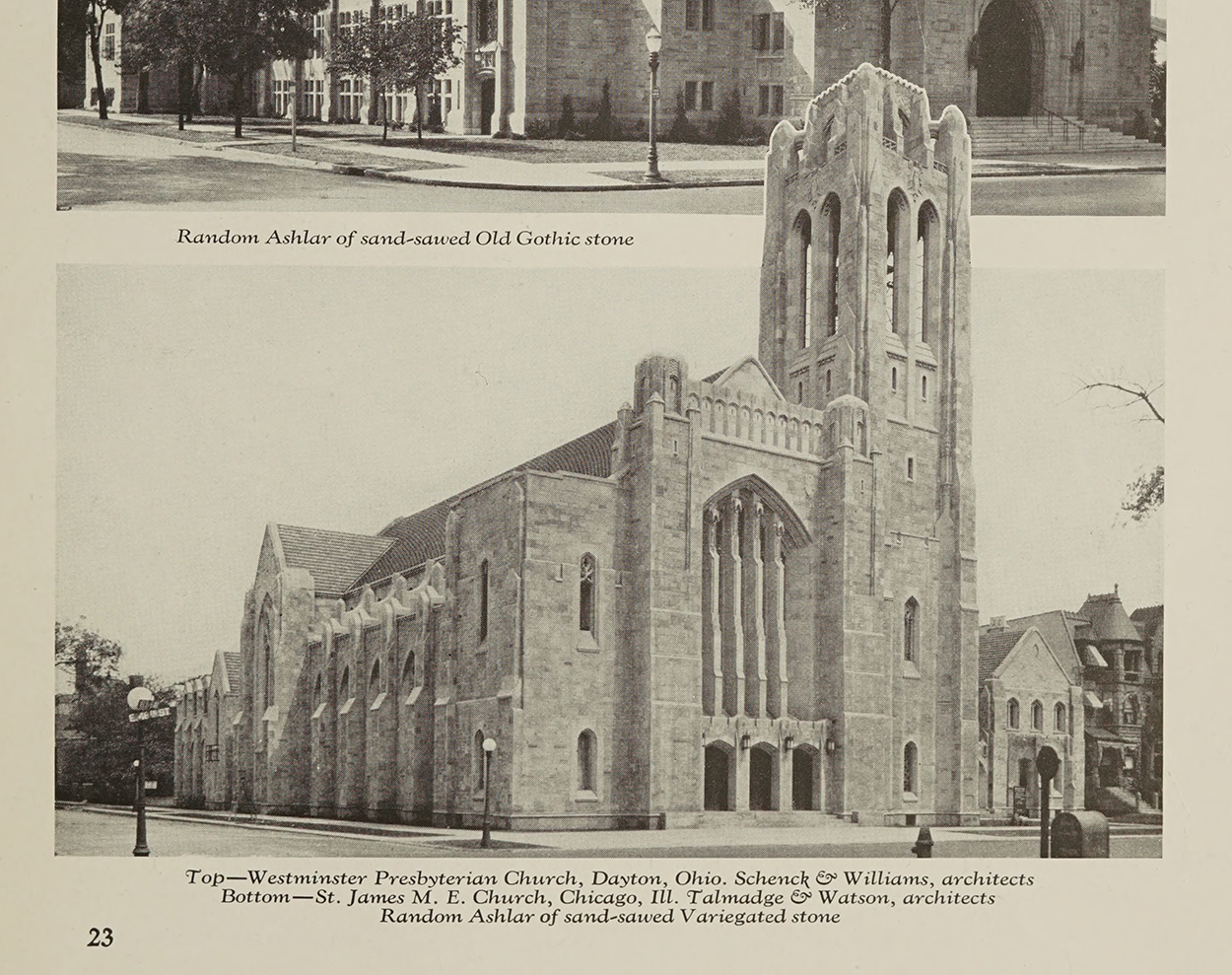
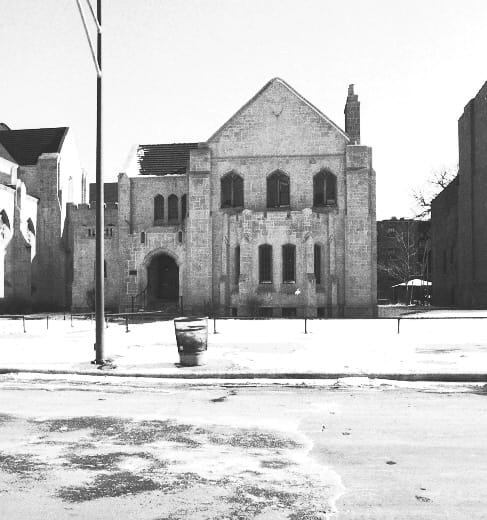
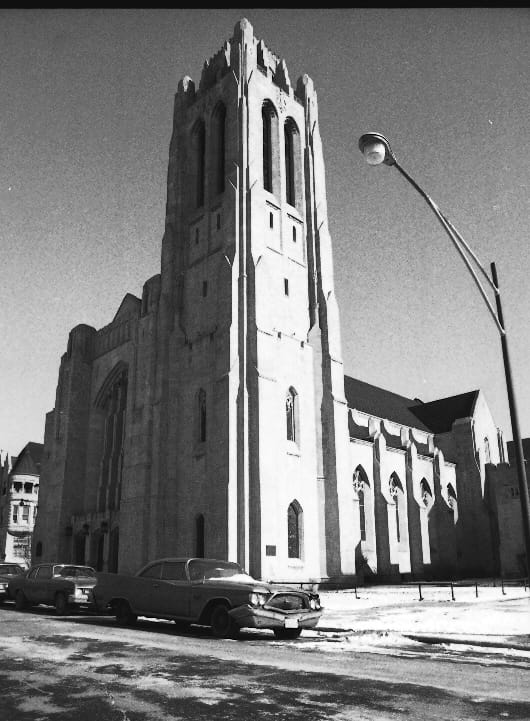
Undated IL5360_3 © Indiana Limestone Company. Courtesy, Indiana Geological and Water Survey, Indiana University, Bloomington, Indiana | Sanctuary photos from the Architectural Record, 1927 | In Stone, 1926 | In 'Old Gothic and Variegated for Random Ashlar', Indiana Limestone Company, the Internet Archive | Two 1970s photos, Illinois State Historic Preservation Office
After the fire, St. James merged with Oakland Methodist Episcopal, and the combined congregation hired the high-profile firm of Tallmadge & Watson for their new church. Tallmadge & Watson were prolific Chicago architects, known for their Prairie-style homes and Gothic churches—here, you can even catch a hint of early Art Deco in the verticality and stripped down ornamentation.
While the racial integration of the congregation appears to have been pretty successful, like many churches their numbers dwindled over the decades. In the 1990s, the congregation rented out space to a charter school, North Kenwood Charter. In the end, it was too much building for a small congregation to maintain. St. James closed in 2010, merging with Hartzell Memorial United Methodist Church, an the building was sold in 2016. The church's grand Casavant Frères pipe organ, picked out in the 1920s by influential Chicago organist Tina Mae Haines, ended up at St. John Cantius.
Included as a contributing property in the North Kenwood Multiple Resource District, a landmark district designated in 1993, a developer plans to convert the building into apartments and a co-working space. Designed by ZED Architects, a building permit was issued in February 2023.
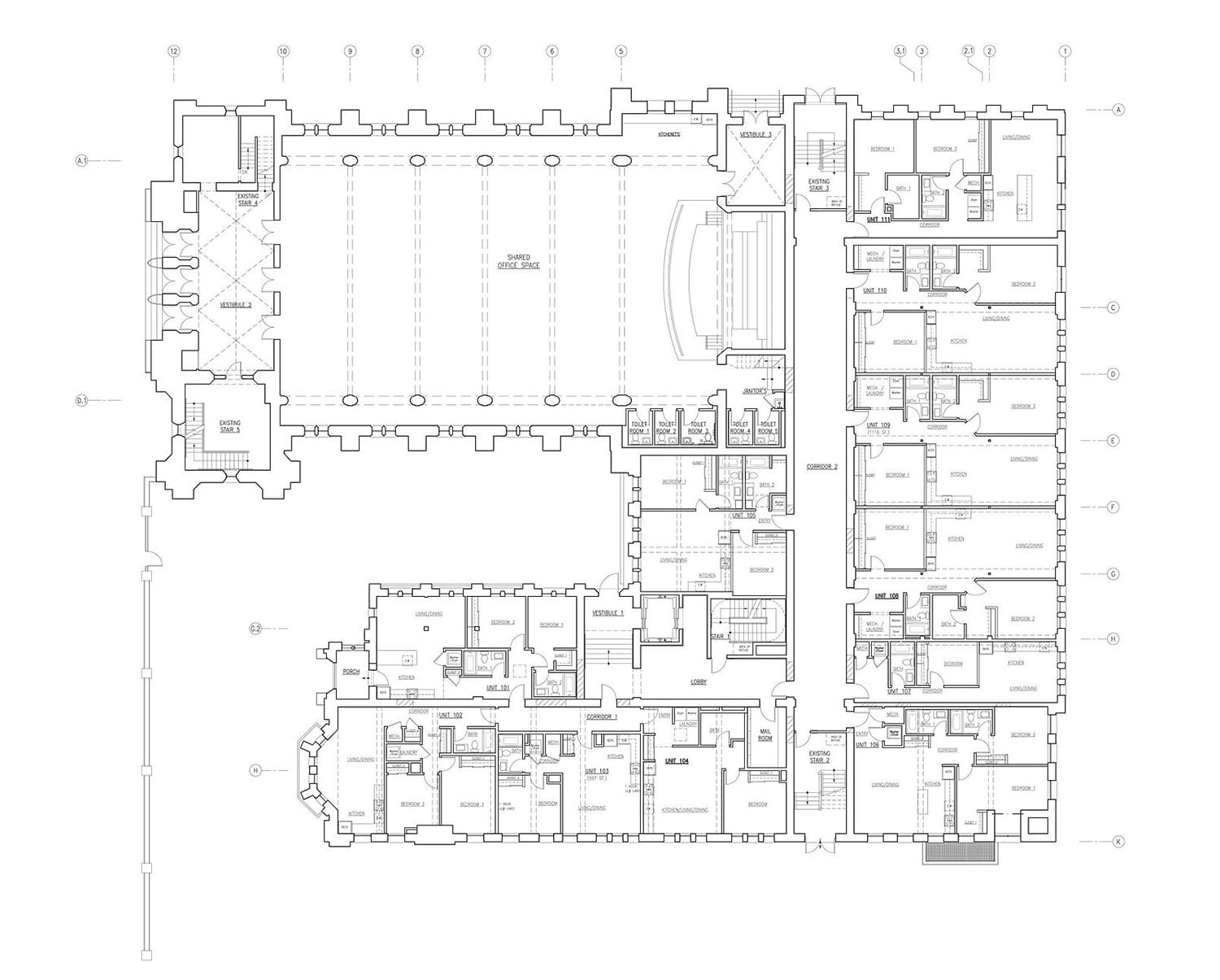
Production Files
Further reading:
- North Kenwood Multiple Resource District, City of Chicago Landmark Designation Report
- 'Bittersweet memories after sale of Chicago church'
- The Plot to Destroy North Kenwood—an interesting 1990s read about how this side of Kenwood was split off from the wealthier southern portion and then hit with the disinvestment, neglect, decline, rediscovery, speculation, and redevelopment cycle
- Architect Thomas Tallmadge on 'The Modern Church Auditorium' in the Architectural Record in 1927
- 'Creative Designs to convert historic church in Chicago’s Kenwood into offices and homes'
The St. James Methodist Episcopal organist, Tina Mae Haines, was a high-profile Chicago organist in the 1920s. A student of Alexandre Guilmant in France, Haines personally selected St. James' 1926 Casavant Frères opus 1130 pipe organ. Its removal, restoration, and relocation to St. John Cantius Catholic Church after St. James closure appears to have been a huge undertaking.
- 'Historic organ finds new life at St. John Cantius' in Chicago Catholic


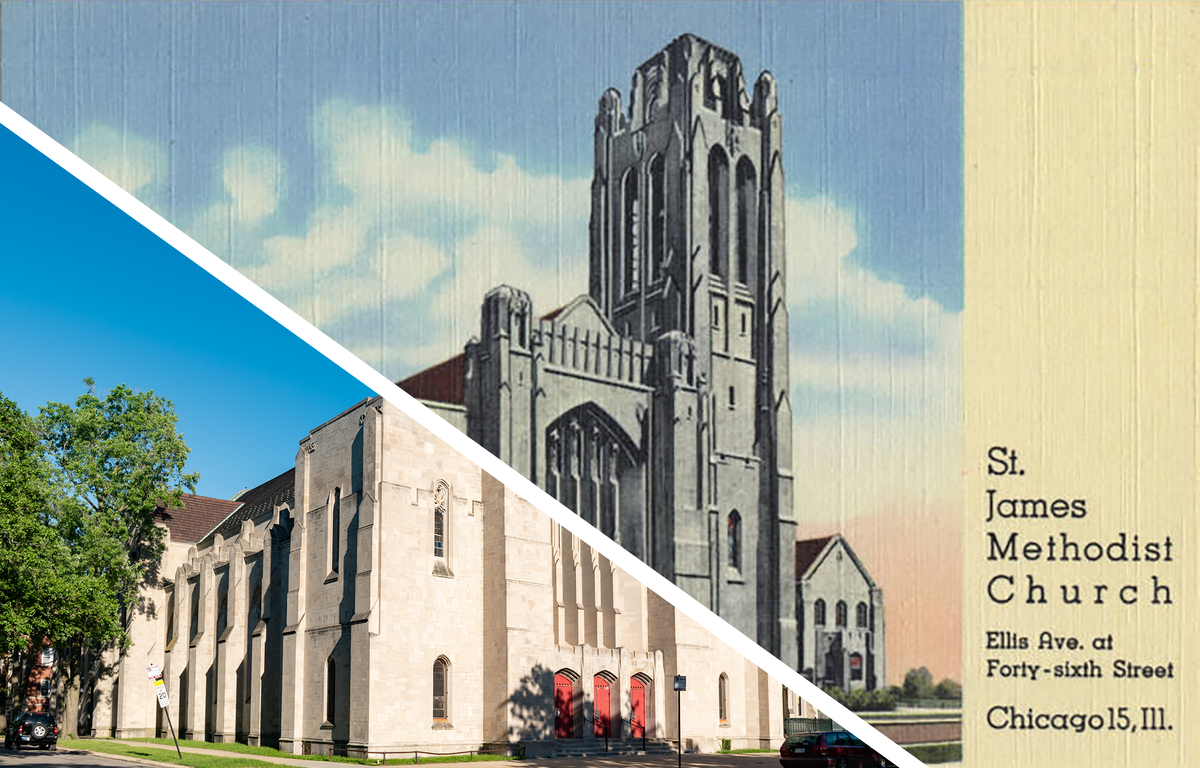
Member discussion: